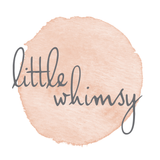Why is there loose fluff on my animal?
Cotton is a natural fibre. The undyed fibres of our white plush friends hold together less tightly than dyed cotton fibre. This causes the stuffed animals to lose fibres and particles. Simply vacuum up excess fibres with an upholstery attachment.
After every production step each animal is blown with compressed air and at the end both brushed and vacuumed. Nevertheless, loose fibres cannot be completely avoided, especially when removing the inner cushions.
The woven plush of the white animals is only washed after weaving and is otherwise neither dyed, bleached, or otherwise treated. However, since cotton is a natural fibre, individual particles of the fibre always stick out, like human hair. The colouring of the other fabrics ensures that the particles stick together firmly, which is not the case with our white plush. Therefore, the white plush is dustier, especially at the beginning of usage, which is completely harmless. It is an untreated natural fibre that is not dangerous. The lint is either lost during use or can simply be vacuumed off. This works best with the suction attachments for the sofa nd armchair. Thorough tapping outdoors will also help reduce lint.
How do I wash and care for my SENGER cuddly toy?
We recommend hand washing with mild detergent or wool detergent. Please do not wring, rub or brush. After washing, squeeze out carefully and leave to dry lying on a towel.
If the animal gets dirty, you can first remove the coarse dirt with a brush. Since we only use natural fibers of the best quality and no polyester, heavy washing is usually not necessary. Since our dear little animals are filled with pure sheep's wool from the Eifel, we generally recommend hand washing with mild detergent or wool detergent. Our little ones do not tolerate strong spinning, natural wool felts well, leading to irreversible clumping of the wool.
The water temperature should be cool and plenty of water should be used. Dissolve a little wool detergent in the water, and then move the animal loosely in it. Before doing this, however, you should soak it with clear water of the same temperature. Please do not rub, brush, spin or wring when washing. After washing, squeeze it out carefully and let it dry on a towel. The wet smell of wool disappears after drying. When drying, move the animal regularly, this makes the drying process easier.
The animals stuffed with cotton can also be washed by hand or in a gentle wash cycle in a mild detergent. Again, avoid using strong spinning, otherwise too many lumps will remain in the cotton. Basically, small lumps can also occur when washing by hand; this cannot be avoided with natural fibres.
Is my new cuddly friend colour-fast when washing?
We use two different techniques to dye our fabrics. Substantive dyeing is primarily used for paler colours while the second technique, reactive dyeing, is mainly used for bolder, darker shades.
Fabric softener should be avoided on fabrics dyed using both of these techniques. With reactive dyeing, the fabric is first bleached using chlorine-free bleach before it is dyed to ensure an intense, long-lasting effect.
All of the dyes we use are free from lead and other damaging additives. No azo dyes are used as a matter of principle. In dyeing our fabrics, we aim to create a secure bond between the dye and the fabric, obtained through, among other things, the heat that is applied in the dyeing process.
If brown discolouration should appear after washing, particularly on white toys, the product was left in the water for too long or was not wrung out properly after washing. If the fabric is left wet for a long continuous period, the dye from the warp yarn of the woven plush begins to bleed and the colour is transferred to the toy. Washing the item for a second time generally helps here.
What is the natural smell of my new SENGER friend?
The majority of our friends for life are filled with sheep's wool from controlled organic animal husbandry, which we obtain from wandering shepherds in the Eifel. In addition to the aspect of using unpolluted natural fibers, for which no environmentally harmful substances are required, sheep's wool offers several advantages: It filters pollutants from the room air, has a temperature-regulating effect and absorbs moisture.
The smell is caused by lanolin, the natural wool fat that protects against dirt and makes the wool waterproof. It also protects the individual wool hair from drying out and becoming scratchy, the filling remains stable and cozy. The smell disappears after a while, but never completely. Especially after washing, the filling smells stronger at first, but that subsides again.































